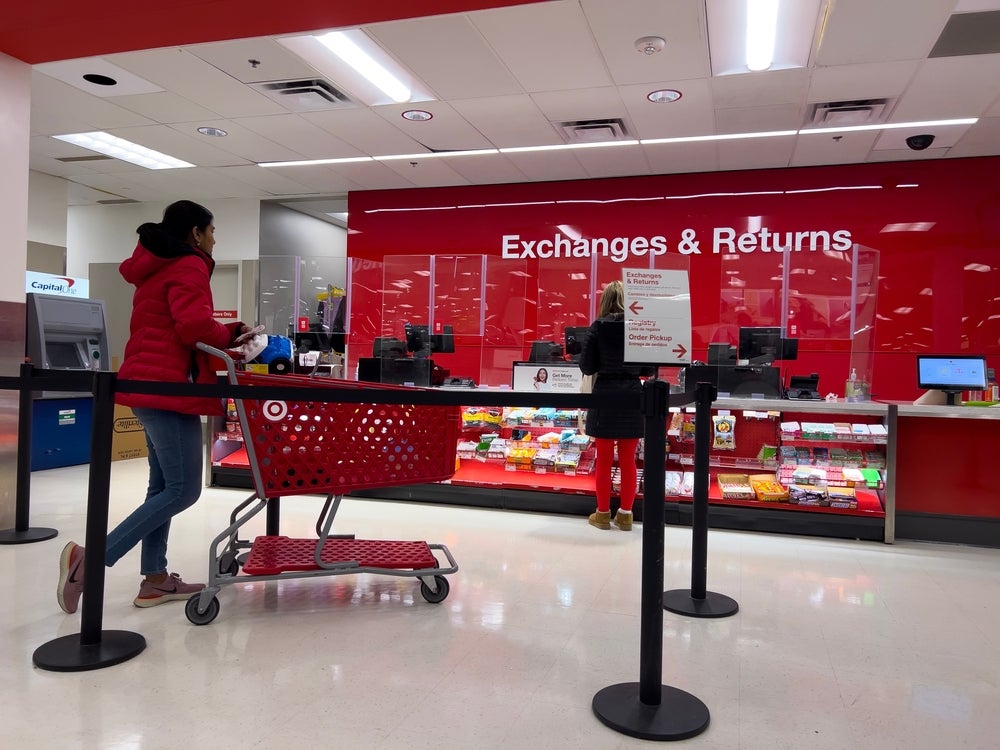
The report titled ‘2023 Consumer Returns in the Retail Industry,’ explained total returns for the US retail industry amounted to $743bn in merchandise and the total returns rate as a percentage of sales was 14.5%
The report, which was produced in collaboration with software company Appriss Retail and paired its customers’ returns data for 60 of the US’s top 100 retailers with NRF survey responses, highlighted the percentage of abuse and fraud impacting total returns was 13.7% or $101bn last year.
It noted that consumers are becoming more comfortable with new types of fraud and abuse, such as bracketing and wardrobing. Bracketing is when consumers buy multiple of the same or similar items, have them shipped, keep one, and return the rest. Wardrobing is when a shopper buys an expensive item, wears it, and then returns it and this accounted for 48.84% of return fraud in 2023.
Appriss Retail CEO Michael Osborne stated the continued growth of online channels has had a significant impact on retail sales and returns.
“One example is our tracking of claims and appeasements, which is a new category in online returns that covers reports for missed, late or damaged deliveries, and is the fastest-growing category for return fraud,” he said.
The report explained claims and appeasements is when a shopper files a claim, they inform the retailer that the product was not received, was received damaged, or has another type of defect. An appeasement is an act by the retailer to provide a credit of some kind to appease the shopper. However, many retailers see claims and
appeasements as directly tied to return fraud and abuse.

US Tariffs are shifting - will you react or anticipate?
Don’t let policy changes catch you off guard. Stay proactive with real-time data and expert analysis.
By GlobalDataRetailers also report abuse of counterfeit online purchase confirmations (digital receipts) being used at an increasing rate to commit return fraud in stores. This is likely due to the poor connectivity between systems.
The in-store returns rate was 13.3%, or $495 billion. However, 49.7% of in-store returns are ‘Buy Online Return In Store’ (BORIS) or originated as an online purchase. As online sales grow, so does their impact on in-store returns.
Removing BORIS from in-store returns puts the pure bricks-and-mortar return rate at 10.02%, or $373bn. As retailers implement no-receipt, no-return policies, fraudulent actors turn to other tactics, like counterfeit returns.
The report stated that retailers need to continue to adapt to these new types of return fraud.
NRF executive director of research Mark Mathews pointed out “retailers continue to test and implement new ways to minimise losses from returns, particularly those that are fraudulent, while at the same time optimising the shopping experience for their customers.”
He added: “Retailer’s efforts include providing greater detailed descriptions on sizing and fit of products for online purchases and requiring a receipt with returned items. As a whole, the industry is prioritising efforts to reduce the amount of merchandise returned in stores and online.”
Retailers expect fewer returns of holiday sales this year, with an expected return rate of 15.4%. However, the same retailers expect fraudulent and abusive returns to increase to 16.5% of returns in 2023 as fraud and abuse are magnified during the holiday season due to increased traffic putting pressure on staff to prioritise transaction speed over process and procedure.
The report concluded the returns picture is changing across all of retail and despite returns rates dropping, fraud and abuse continue to grow as shoppers take advantage of policy, process, and system gaps within retailers.
Retail sales are estimated to increase by as much as 4% with digital increasing by 10%, however digital growth has an increased impact on in-store returns rates and leads to a significant increase in online claims and appeasements for missed, late, or damaged deliveries. Plus, fraud and abuse are growing at a significant pace in this category.
Retailers continue to explore options to mitigate the losses related to returns abuse and fraud. They are testing in-store policy changes and limiting the flexibility of online returns. As they undertake these new experiments, they must closely monitor consumer reactions.
The reported added the new standard for customer service is frictionless retail, and any impedance will have an impact on the companies that implement it.



